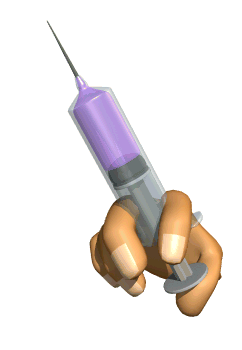
A lot of candidates have given up on LinkedIn.
I probably speak with 20-30 executive candidates a week who’ve been out of work over a year. When I ask about their thoughts of using LinkedIn to find a job – I can almost hear the frowns and sour expressions over the phone.
Have you given up?
Are you getting job leads and referrals through LinkedIn?
If you are getting an adequate level of job leads and referrals – STOP now – No need to read further.
If on the other hand – you’re not getting enough job leads and referrals, let’s discuss how you can give a “booster shot” to your use of LinkedIn as a powerful tool in your job search.
Before we delve deeper into this amazing tool – I would like to suggest you download our FREE LinkedIn Profile Self-Assessment. Thousands of candidates have taken the LinkedIn Profile Self-Assessment and have dramatically improved their chances of being identified in a search.
LinkedIn Job Search Metrics
Let’s define some metrics related to your LinkedIn activities. In surveys and informal research (speaking to thousands of executive candidates over the last 12-18 months), here are some average metrics:
- 25 new connections (relevant to your search) per week
- 30-40 searches weekly of which your profile was included in the search
- 15-20 direct views of your profile weekly off of searches
- 5-7 direct inquiries per week from recruiters, hiring managers, or HR staff.
- 2-3 phone interviews per week based on recruiters/HR finding your resume on LinkedIn.
if you could obtain these metrics for investing 10-12 hours per week on LinkedIn, would the investment be a good use of your time?
Let’s tackle the first element on the assessment – your complete work history. I’m probably sounding like a broken record – you’ve heard me say it over and over again – LinkedIn is one of the greatest tools ever created for Job Search.
The problem is like most tools – you’ve got to practice using it, you’ve got to have the skill to use it properly, and it takes time to truly master how it can help your job search.
Let’s step through line-by-line the various elements on our LinkedIn Profile Self-Assessment. Upon finishing this blog series, you’ll have the knowledge and skills to master LinkedIn to drive the type of job search metrics listed above.
LinkedIn Profile – Work History
Do you have your full work history described in detail under your profile? Does it match up with your resume. Many employers are now verifying that your LinkedIn Profile is consistent with your resume.
Have you benchmarked your career trajectory with other top talent in your industry – functional area? If you network with other people just like you – how do their profiles compare with your profile? Are there people within your functional area or industry that are considered top talent – what do their profiles look like?
When recruiters, hiring managers, or human resource staff are conducting searches on LinkedIn for people just like you – what words and phrases are they using? How would you find out? ASK THEM!
What is the most impressive element of your work history? What’s the one or two things a potential employer/recruiter might say “WOW” if they saw it on your profile? What gave you a “WOW” jolt when you looked at other comparable profiles? Do you highlight these “WOW” factors to stand out.
LinkedIn Profile – Job Lead Generation
Are you searching for everyone at your former companies that are either currently employed at that company or are alumni of the company? This is a group that would be more than willing to help you. You’re part of their village. You’re one of the clan. When learning of your alumni status, most people would go out of their way to help you. Are you searching their connections for leads/connections to potential hiring managers, recruiters, or HR staff?
Are you elaborating upon your background by creating blog posts, Slideshare presentations, and box.net documents? Have you added video and audio elements to your profile to expand upon your work history? Are you sharing this additional content. You should be thinking content marketing and distribution to grab the attention of potential hiring managers, recruiters and HR staff? Are any of your peers using content to improve their exposure and visibility?
When you hear of an job opportunity, do you search your extensive network on LinkedIn to see if someone is connected that might help you. If you’ve focused your efforts on connecting with appropriate job search contacts, after a year I would think your network should be in the 1,500-2,000 contact range with a potential reach in the 250,000 contact range through 2nd level contacts.
LinkedIn Profile – Optimizing for Searches
The final step in leveraging your LinkedIn profile is to optimize it so that you can be “found high in the search results”. My partner, Brad Remillard, just completed a webinar on this topic. You can still buy the presentation and slide deck. It doesn’t do you any good if you come up in a search results on page 14 or 15.
Is your profile embedded in the right places with the right keywords so that when hiring managers, recruiters, and HR staff are conducting searches – you pop up in the first few pages of search results. If you’re profile is not optimized for search on LinkedIn, you’re probably never going to be called or contacted since most individuals in the hiring profession will not bother to view search results 9 pages deep.
A quick and dirty method to determine if your profile is optimized for search is to look at the ratio between total searches done in which your profile appears compared to the total number of direct profile views. If this ratio is less than 50%, your profile is probably not effectively optimized.
In our next blog post, we’ll focus on how to properly convey your accomplishments and achievements in your LinkedIn Profile.
Barry Deutsch
P.S. Don’t forget to download the LinkedIn Profile Self-Assessment so that you can determine your starting point and what is needed to improve your profile so that you stand out to hiring managers, recruiters, and HR staff.


















